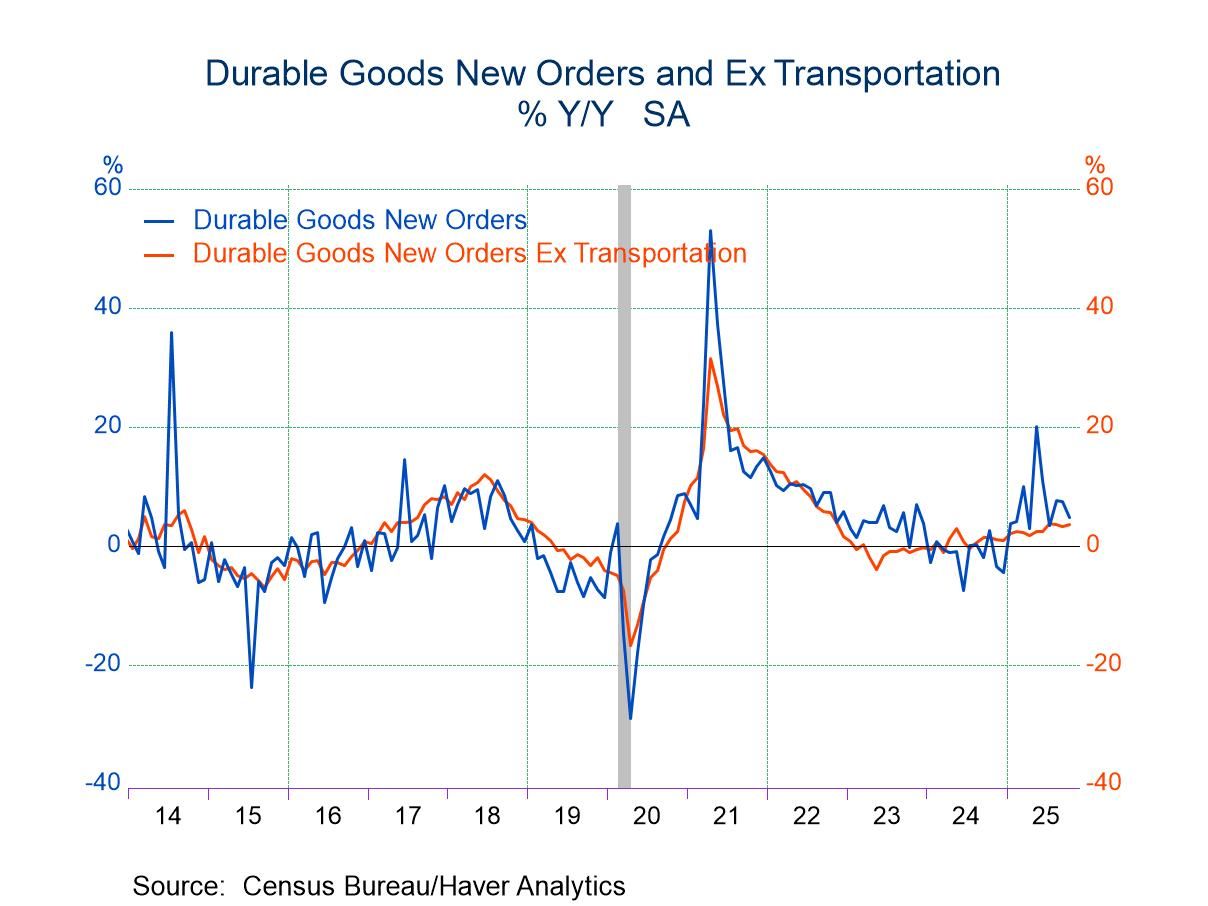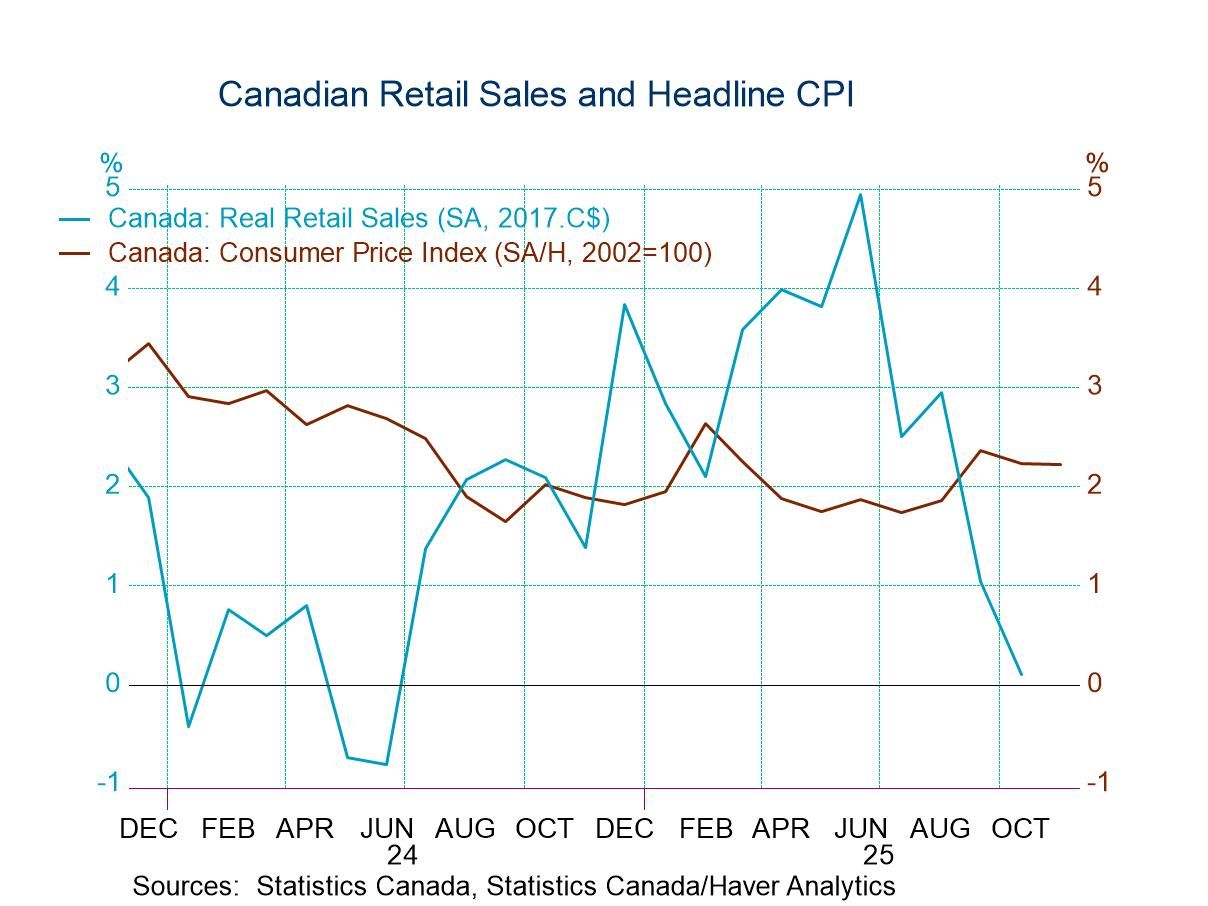 Global| Nov 30 2016
Global| Nov 30 2016U.S. Personal Income Gain Strengthens and Outpaces Spending
by:Tom Moeller
|in:Economy in Brief
Summary
Personal income posted a 0.6% increase (3.9% y/y) during October following 0.4% September rise, revised from 0.3%. It was the largest increase in six months. A 0.4% increase had been expected in the Action Economics Forecast Survey. [...]
Personal income posted a 0.6% increase (3.9% y/y) during October following 0.4% September rise, revised from 0.3%. It was the largest increase in six months. A 0.4% increase had been expected in the Action Economics Forecast Survey. Disposable personal income also increased 0.6% (4.1% y/y) after a 0.4% rise. Adjusted for higher prices, take-home pay improved 0.4% (2.7% y/y), the largest rise since December 2015.
Wages & salaries rose a steady 0.5% (4.3% y/y). Receipts on assets jumped 1.2% (2.5% y/y), the strongest rise since April 2014. Rental income gained 0.7% (5.9% y/y) following a 0.5% increase. Proprietors' income improved 0.5% (2.8% y/y) after a 0.9% strengthening. Transfer receipts gained 0.5% (3.9% y/y). That reflected a 1.1% jump (3.8% y/y) in Social Security payments following two months of 0.2% increase. Medicare payments rose 0.3% (5.2% y/y) for the fourth straight month. Medicaid receipts inched 0.1% higher (5.3% y/y), also following four straight months of strong gain. Unemployment insurance benefits declined 2.4% (-8.1% y/y) with the improved job market.
Personal consumption expenditures increased 0.3% (4.2% y/y) after a 0.7% September improvement from no change in August. Both of these figures were upwardly revised from 0.5% and -0.1%, respectively. A 0.5% increase had been expected in the Action Economics Forecast Survey.
Adjusted for higher prices, spending rose 0.1% (2.8% y/y) after a 0.5% increase. A 1.0% rise (8.3% y/y) in real durable goods spending led last month's rise as recreational goods & vehicles surged 2.0% (11.3% y/y). Real motor vehicle purchases increased 1.1% (8.5% y/y) after a 5.3% rise. Home furnishings & appliance spending declined 0.2% (+6.4% y/y) after a 0.9% gain. Real nondurable goods purchases increased 0.8% (2.9% y/y) as eating out jumped 1.1% (5.2% y/y) after a 0.2% increase. Clothing purchases rose 0.2% (1.4% y/y) following a 0.3% gain. Real services outlays declined 0.3% (+1.9% y/y) and reversed the September rise. A 1.3% decline (+1.5% y/y) in restaurant & accommodations spending led the decline after a 0.8% increase. A 1.0% fall (-0.6% y/y) in recreation services outlays added to the weakness. Health care outlays rose 0.2% (4.5% y/y) following two months of similar gain.
The personal savings rate increased to 6.0% from 5.7%, but it remained below the high of 6.2% in March. The level of personal savings increased 3.9% y/y.
The chain price index increased 0.2% (1.4% y/y) for the third straight month, while excluding food & energy prices notched 0.1% higher (1.7% y/y) for the fourth month in five. A 6.5% increase (-0.9% y/y) in gasoline prices led the index higher. Clothing prices added to the rise with a 0.3% increase, and they were up 0.3% y/y as well. The durable goods price index remained steady (-2.4% y/y) after a 0.5% drop. A 0.7% decline in recreational goods prices (-6.0% y/y) paced the weakness. The services price index increased 0.2% (2.4% y/y) as it has in all but two months this year.
The personal income & consumption figures are available in Haver's USECON database with detail in the USNA database. The Action Economics figure is in the AS1REPNA database. Further detail is in USNA.
The Fed's latest Beige Book covering regional economic conditions is available here.
| Personal Income & Outlays (%) | Oct | Sep | Aug | Oct Y/Y | 2015 | 2014 | 2013 |
|---|---|---|---|---|---|---|---|
| Personal Consumption Expenditures | 0.3 | 0.7 | 0.0 | 4.2 | 3.5 | 4.4 | 2.8 |
| Personal Income | 0.6 | 0.4 | 0.3 | 3.9 | 4.4 | 5.2 | 1.1 |
| Wages & Salaries | 0.5 | 0.5 | 0.1 | 4.3 | 5.1 | 5.1 | 2.7 |
| Disposable Personal Income | 0.6 | 0.4 | 0.2 | 4.1 | 3.8 | 5.1 | -0.1 |
| Personal Saving Rate | 6.0 | 5.7 | 6.0 | 6.1 (Oct '15) |
5.8 | 5.6 | 5.0 |
| PCE Chain Price Index | 0.2 | 0.2 | 0.2 | 1.4 | 0.3 | 1.5 | 1.3 |
| Less Food & Energy | 0.1 | 0.1 | 0.2 | 1.7 | 1.4 | 1.6 | 1.5 |
| Real Personal Consumption Expenditures | 0.1 | 0.5 | -0.1 | 2.8 | 3.2 | 2.9 | 1.5 |
| Real Disposable Income | 0.4 | 0.2 | 0.1 | 2.7 | 3.5 | 3.5 | -1.4 |
Tom Moeller
AuthorMore in Author Profile »Prior to joining Haver Analytics in 2000, Mr. Moeller worked as the Economist at Chancellor Capital Management from 1985 to 1999. There, he developed comprehensive economic forecasts and interpreted economic data for equity and fixed income portfolio managers. Also at Chancellor, Mr. Moeller worked as an equity analyst and was responsible for researching and rating companies in the economically sensitive automobile and housing industries for investment in Chancellor’s equity portfolio. Prior to joining Chancellor, Mr. Moeller was an Economist at Citibank from 1979 to 1984. He also analyzed pricing behavior in the metals industry for the Council on Wage and Price Stability in Washington, D.C. In 1999, Mr. Moeller received the award for most accurate forecast from the Forecasters' Club of New York. From 1990 to 1992 he was President of the New York Association for Business Economists. Mr. Moeller earned an M.B.A. in Finance from Fordham University, where he graduated in 1987. He holds a Bachelor of Arts in Economics from George Washington University.










